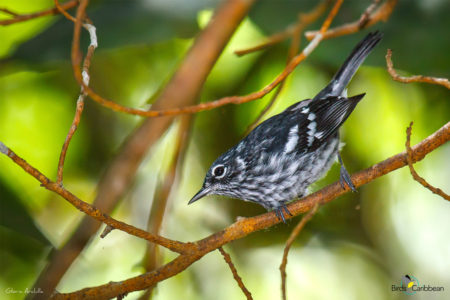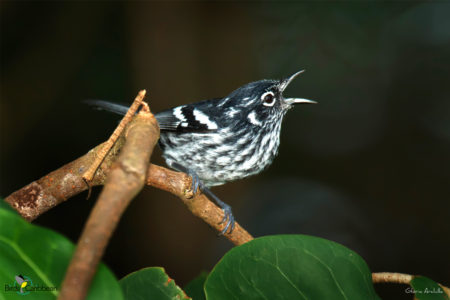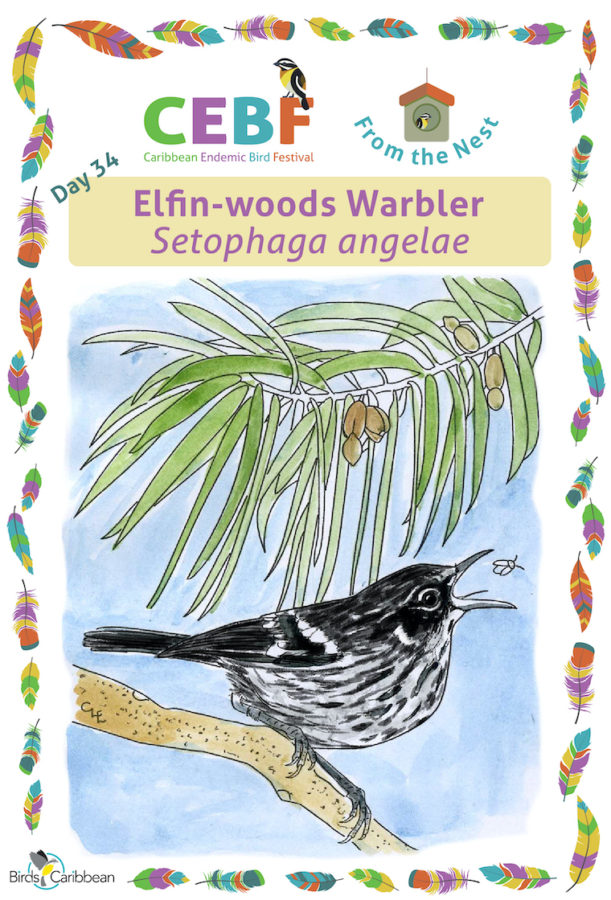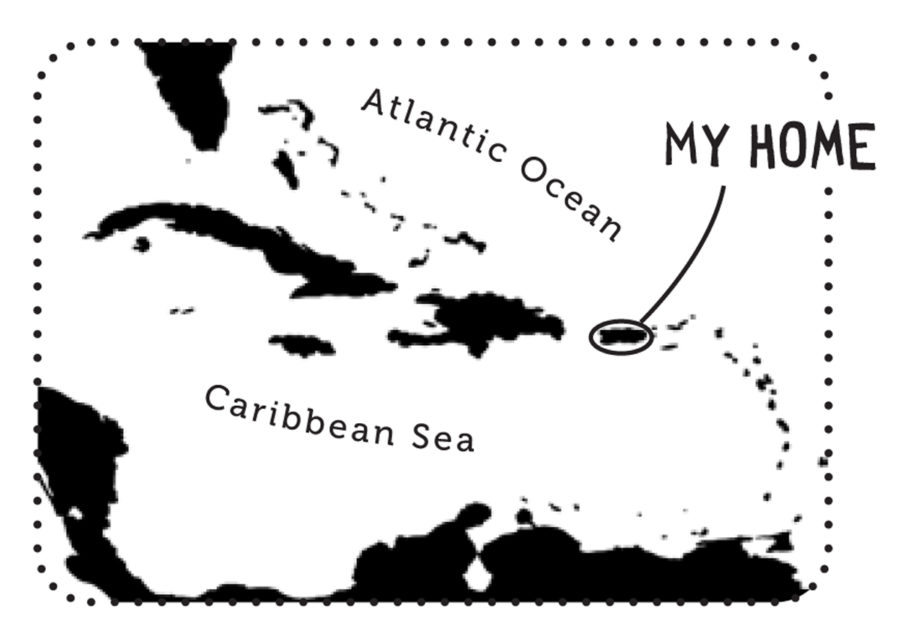Celebrate the Caribbean Endemic Bird Festival (CEBF) with us in our virtual “From the Nest” edition! Have fun learning about a new endemic bird every day. We have colouring pages, puzzles, activities, and more. Download for free and enjoy nature with your family at home.
Endemic Bird of the Day: Elfin-woods Warbler
The Elfin-woods Warbler is a rare bird found only in mountain forests in Puerto Rico. Describing it as an elusive bird is an understatement—the warbler avoided discovery until 1969 and was not described as a new species until 1973! This could in part be due to its similarity to the Black-and-White Warbler, which migrates through Puerto Rico. The species was named after Angela Kepler, one of its discoverers. It is the last new species to be described for the region.
The Elfin-woods Warbler is a small bird with black and white plumage. Adults have a black crown and back, incomplete white eye ring, thin white eyebrow and 2 white wing bars. The underparts are white, with black streaks on the throat, breast and flanks. The sexes look alike but males tend to have larger amounts of black streaking on the breast and throat. Juveniles have a similar pattern as the adults, but the black is replaced by grayish-green on the back and yellowish-green on their heads and underparts.
The Elfin-woods Warbler can be differentiated from the Black-and-white Warbler by the absence of white streaks on its back and different black and white pattern on the head. Their behavior also differs: Black-and-white Warblers creep along the trunks of trees whereas Elfin-woods Warblers glean small insects from leaves and small branches of trees and bushes. It moves rapidly among ravines and dense understory of its preferred habitat in moist montane dwarf forest. It often flocks together with other birds – this may also explain how it remained undetected for so many years.
Its current range is limited to just two locations, Maricao Commonwealth Forest and El Yunque National Forest, in the western and eastern parts of Puerto Rico, respectively. The species is listed as Endangered due to its small range and declining population size. The main threat is ongoing loss and modification of its prime forest habitat, even in protected areas. Since the 1980s, the construction of communication infrastructure (e.g., cell phone, microwave and radio towers) and roads, as well as expanded recreation facilities, continues to destroy and fragment its dwarf forest habitat. Conservationists are trying to create a biological corridor that they hope will increase the Elfin-woods Warbler’s range.
The species’ common name in Spanish Reinita de Bosque Enano refers to the place where it was discovered as well as to its size. In Puerto Rico most people call small birds “Reinita” and “del Bosque Enano” refers to the dwarf forest where it was seen for the first time. It is one of the 12 species of New World warblers exclusively found in the Caribbean region. Learn more about this species, including its range, photos, and calls here.
Colour in the Elfin-woods Warbler!
Download the page from Endemic Birds of the West Indies Colouring Book. Use the drawing above or photo below as your guide, or you can look up pictures of the bird online or in a bird field guide if you have one. Share your coloured-in page with us by posting it online and tagging us @BirdsCaribbean #CEBFfromthenest
Listen to the call of the Elfin-woods Warbler
The Elfin-woods Warbler”s song is a series of short, rapidly uttered, unmusical notes on one pitch, increasing in volume and ending with a short series of distinct double notes. It also produces a short metallic “chip” call and a contact call which is similar to the song but without the double-note ending.
Puzzle of the Day
Click on the image below to do the puzzle. You can make the puzzle as easy or as hard as you like – for example, 6, 8, or 12 pieces for young children, all the way up to 1,024 pieces for those that are up for a challenge!


Activity of the Day
FOR KIDS & ADULTS: Check out the great video of the rare Elfin-woods Warbler moving through the forest vegetation and gleaning insects from the leaves and branches. This video was recorded in the Maricao State Forest (Monte del Estado).


